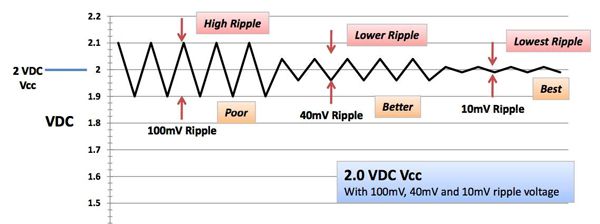Modular DC-DC switching voltage converters (or voltage regulators) are fully integrated devices that take away most of the complexity of power supply design — but not all. One of the key areas that are still left to the design engineer’s discretion is the choice of components for, and layout of, the energy storage and filtering circuits. In principle, these look like simple circuits comprising a few resistors, capacitors, and the energy-storage element, usually an inductor.
However, this simplicity belies the fact that the vast majority of problems associated with switching regulators have nothing to do with the module itself, rather the improper use of capacitors in the input filter and energy storage and filtering circuitry. Choosing the wrong type of capacitor, getting the required capacitance just slightly incorrect or misplacing the passive device can cause an otherwise perfectly functioning voltage regulator module to generate excessive electromagnetic interference (EMI). In a worse-case scenario, poor capacitor selection can result in a good voltage regulator becoming unstable and failing prematurely.
This article describes how to select the correct capacitors for the external circuitry of modular voltage regulators and describes what can go wrong if a poor choice is made.
Dealing with EMI
Switching voltage regulators have become popular because they are efficient and flexible. However, there is a trade-off. The chips are more expensive, take up more space, have a relatively slow transient response to load variances, and, because of the switching operation, it can be difficult to prevent EMI from the switching circuit radiating out into both input and output sides of the device.
The best way to tackle EMI is to target the source, which in a switching regulator is typically the power Field Effect Transistor (FET), particularly when it turns off. Figure 1 shows a basic step-down (“buck”) regulator. When the power FET (“Q1”) is on, current flows around the circuit as indicated by the arrows. When Q1 is turned OFF, the voltage on the end of the inductor closest to Q1 is forced to swing negative until the diode responds by turning on to hold the current through the inductor constant. However, because the diode cannot switch-on in zero time, the voltage can overshoot beyond the diode drop and then ripple (or “ring”) as the diode eventually turns on. Even if a Schottky diode is used, parasitic trace inductance will still cause some rippling to occur. This rippling generates EMI in the 20-100 MHz range.
For more detail: Capacitor Selection is Key to Good Voltage Regulator Design

